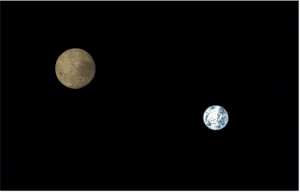
by Blaine Curcio
China’s lunar program has made impressive strides in recent years. Perhaps the most captivating moment thus far was the landing and exploration of the Lunar far side by the Chang’e-4 spacecraft and the Yutu-2 rover, with the mission arriving at the moon in early 2019.
Less heralded at the time, however, was the importance of the mission’s relay and support satellites. In short, because Chang’e-4 and Yutu-2 went to the Lunar far side, there was never a window to send a signal directly to Earth (Chang’e-4 and Yutu-2 were always on the side of the Moon facing away from the Earth). That being the case, the mission was enabled by relay satellites, or specifically, the Queqiao relay satellite, with Queqiao being Chinese for magpie bridge, and the two microsatellites Longjiang-1 and -2, with Longjiang being Chinese for Dragon River. Without the Queqiao satellite, we could have never communicated with Chang’e-4 on the Lunar far side, and without Longjiang-1 and -2, we would not have some truly epic photos of the moon (more on that later).
Last week, we saw an article on Chinese media commemorating the third anniversary of the launch of Queqiao, which occurred on 21 May 2018 from Xichang Launch Center onboard a Long March-4B rocket. Arriving at the Moon around mid-June, Queqiao waited patiently for 6 months while Chang’e-4 was completed and launched, with the latter landing in the Von Karman Crater on 3 January 2019. The Queqiao relay satellite has been working diligently in an orbit of around 65,000km above the Moon ever since, as the Yutu-2 rover has traveled more than 700 meters across the Moon’s surface.
The launch of Queqiao also included the Longjiang-1 and -2 satellites, themselves noteworthy. Weighing in at around 45kg each, the satellites were designed and built by the Harbin Institute of Technology (HIT), one of China’s leading engineering universities, and included cameras that captured some incredible photos, of which there is a great gallery here. The satellites are noteworthy in that they were built for amateur radio and astronomy purposes, and have given rise to some interesting research resulting from their VHF/UHF communication systems.
With many things happening in the space industry, seemingly every week, and with many of these things being projects of a grand scale, let us take a moment to commemorate the unsung heroes of the Chang’e-4 Lunar far side mission. Let’s hope for many more years of service from Queqiao, and may the Longjiang-2 satellite rest in peace in the Van Gent crater of the Moon.
This article is an expanded version of one of the articles in our recent Dongfang Hour Weekly Newsletter, which offers coverage of weekly updates in the Chinese space sector.
Blaine Curcio has spent the past 10 years at the intersection of China and the space sector. Blaine has spent most of the past decade in China, including Hong Kong, Shenzhen, and Beijing, working as a consultant and analyst covering the space/satcom sector for companies including Euroconsult and Orbital Gateway Consulting. When not talking about China space, Blaine can be found reading about economics/finance, exploring cities, and taking photos.
 SpaceWatch.Global An independent perspective on space
SpaceWatch.Global An independent perspective on space




